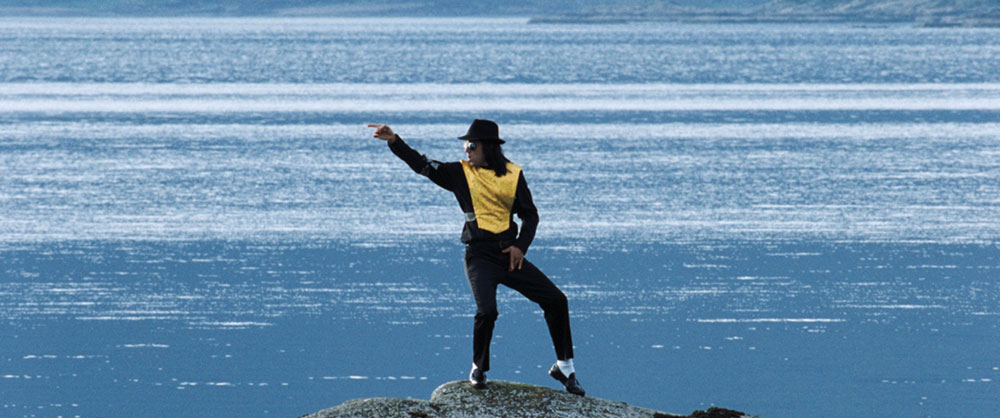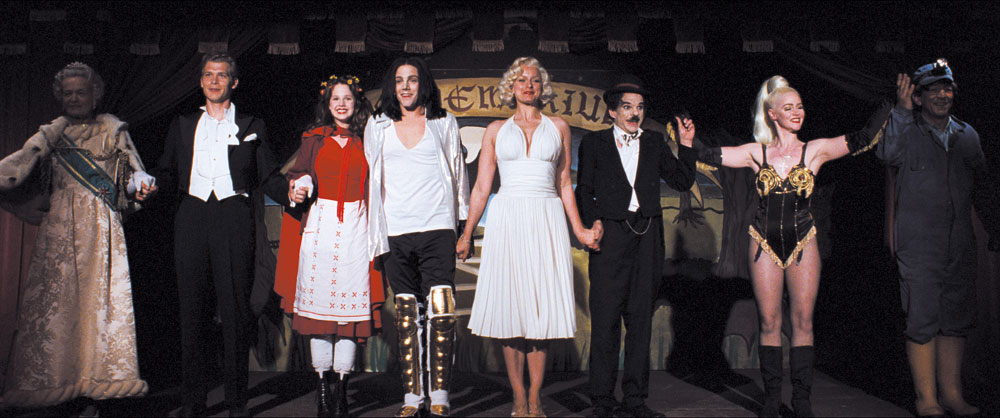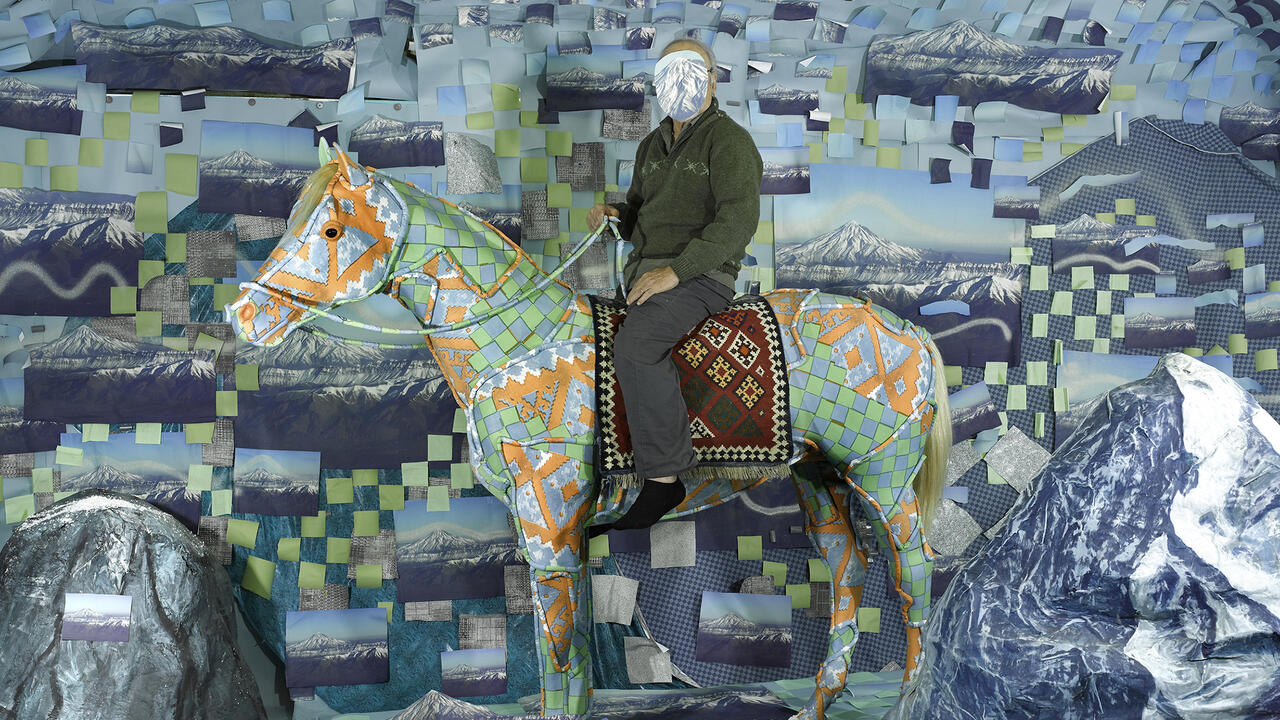Ms. and Mr Lonely
Having risen to youthful notoriety in the 1990s, Alex Bag and Harmony Korine have moved on to something darker and more searching
Having risen to youthful notoriety in the 1990s, Alex Bag and Harmony Korine have moved on to something darker and more searching

1.
I was going to try to score the moment’s cankerous mood with this choice personal ad from craigslist.org:
MILITARY GUY JUST GOT BACK FROM MIDDLE EAST - m4m -22
Hey, I am a 22 year old six foot three tall light brown haired white boy. I spent 3 ½ years in the marine Corps. I am lean now I am training for the twins cities marathon this fall. I Recently got out two weeks ago and now im broke. im str8, just doing this to make some extra cash to meet up w/my fiance back on the east coast...40X-5X9-1642... DONT ASK FOR MORE PICS BEACUSE I WILL NOT SEND. IM ENGAGED W/A LOVELY 1 MONTH YEAR OLD DAUGHTER AND WONT RISK MY FAMILY LIFE TO SEND PICS TO SOME STRANGER... RATES START AT $100...
Breaks my heart: the grammar and typos, the temporally confusing ‘lovely 1 month year old daughter,’ the waiting fiancée, the Marine back home to find few options other than – given military pay, more than likely not much beyond a high school education, and an actual desert unwittingly exchanged for economic one – giving more than he’ll ever get, however much he charges. Cannon fodder for sale. Story of his life.
For those suspicious, cynical or smug enough to consider the come-on a fake-out, the situation’s even bleaker, if possible: all this last-ditch desperation, militarily inflected domestic turmoil, and financial mismanagement staged for ambivalent erotic effect.
The ad appeared to be a surefire metaphor for the situation at hand, but then, of course, the King of Pop announced his upcoming tour. I can’t go into this as deeply as I’d like (that would be another essay entirely), but, basically, has there been, over the past few decades, a more acute representative and/or representation of America than Michael Jackson? His personal travails uncannily – phantasmatically? – sync up with our national turmoil, as if he were giving some command performance, repeatedly, to embody or portray America’s disfigurement (with which even his complex negotiation and/or fracturing of race, gender and age resonates). Operation Desert Storm parallels his first sexual abuse allegations (a.k.a. the Jordie Chandler affair) and marriage to Elvis’ daughter; Operation Iraqi Freedom shadows his child sexual abuse trials. During much of the Bush administration’s reign, he lived in the Persian Gulf, guest of a sheikh on the island of Bahrain. Fitting that now, barely having escaped the foreclosure of Neverland Ranch, he returns with This Is It, a series of concert gigs – and personal bailout – that he proclaims will be his ‘final curtain call’. Whether marking a dire, existential finitude or the most supercalifragilisticexpialidocious event ever, those three stark words, no antecedents, might as well be his and our epitaph.

2.
Alex Bag and Harmony Korine rose to fame (and infamy) in the mid-1990s. Appearing on the covers of the hippest culture mags, showing at the right galleries, living notoriously hard and fast, they made some of the most compelling work of the time, which combined a punk energy with comedic brilliance and no small amount of heartbreak. Recall, from the final sequence of Bag’s Untitled (Fall ’95) (1995), the New York School of Visual Arts student, educated in ways she never could have predicted about the art world and its dreary machinations, crying, a tulip in her hand, as Morrissey sings ‘Suedehead,’ from his resonantly titled 1988 solo debut Viva Hate; and, from Korine’s Gummo (1997), Jacob Reynolds eating spaghetti in the bathtub, his hair a shampoo twister: set pieces which managed to discombobulate supposed antipathies of the actual and the ironic, the forlorn and the hilarious. Whatever else the artists showed, their narratives reflected the differences and inequities of women and men, haves and have-nots, all of it found in the local, whether it was delivered in the patois of the downtown New York art world or of a rural community in Ohio or West Virginia. Although both artists continued to make resonant works in an array of media, they seemed to fade from view (despite the fact that they continued to make work, most of it much more enthralling than what garnered popular attention, a regime of crapola, no small part of which was heavily indebted to, when not an out-and-out rip-off of, what Bag and Korine had accomplished).
Within the last year both artists have ‘returned’, Bag with a new video for her first solo museum show (above), Korine with his first feature film in a decade. Although rarely, if ever, discussed together in the heydays of their initial acclaim, both Bag and Korine have arrived in the (dreaded?) zone of mid-career presenting works which deal with the doubts about and problems of how to acknowledge the notoriety of youth and yet move on to something else, darker and searching. By retaining all the strengths and perversity of their earlier work, never shunning the complex modes of conveying the personal, both artists achieve something resonant with all the gloom, but resisting it, the feeling of a paradigm shift, emotively freaked: political consequence delivered in a guise altogether beyond the gargoyled regime of the properly ‘political’.

3.
‘Set the GPS to Despair.’ The sentiment arrives courtesy of Bag’s Untitled (Project for the Whitney Museum) (2009), snarled by a plush red hand-puppet dragon (a kind of Puerto Rican Puff the Magic Dragon channeling Cheech & Chong), who helps the depressed hostess of a children’s variety show by derisively questioning every move she makes. As much as it’s an unnerving curtsey to her own mother’s career as the host of kid’s programmes (The Carol Corbett Show in the mid-to-late 1960s and The Patchwork Family in the 1970s), Bag’s video revisits the plights of pedagogy showcased in Untitled (Fall ’95) (1995), only this time the student has become, whether she likes it or not, the teacher. At an early point in the video, Bag’s lost host says she was ‘trying to pinpoint where things started to go wrong’ for her, some ‘early schism.’ She flips up the album sleeve to David Bowie’s Aladdin Sane (1973) – her introduction to ‘otherness’ and ‘distance,’ ‘otherworlds and otherworldliness.’ Not buying any of it, the dragon bullies her about Bowie: ‘It’s his fault you’re a broken down freak of nature?’
By retaining all the strengths and perversity of their earlier work and never shunning the complex modes of conveying the personal, both Bag and Korine achieve something resonant with all the gloom.
In the form of something akin to a homemade Pee-Wee’s Playhouse for the depressed, what transpires rises or falls to a questioning of how anyone understands being and what, specifically, triggers the taught or discovered ‘schism’ that makes someone desire to become an artist. The dragon never lets anyone forget that the hostess has been cited for ‘contributing to the delinquency of a minor’ – which isn’t far from what art can accomplish, i.e., to give one choice, which, if free, necessitates the possibility of allowing anyone to choose badly. In the video, this ‘delinquency’ looks many ways: it’s the green screen behind the television hostess and dragon which roils with images of Hieronymus Bosch paintings, swirling vortexes, firestorms, Hurricane Katrina-haunted tempests (the way life feels many days of the week); it’s the tripped-out animal handler intoning that ‘There’s the thing and then what the thing means. Don’t let what the thing means scare you from the thing, okay?’ – as a huge snake coils around his and various children’s bodies; it’s the goth version of the hostess reading to the assembled children a long passage from Sartre’s Nausea (1938); it’s the clip from Bag’s mom’s Patchwork show of athletic artist Suzy Pruden instructing two girls in how to make a finger painting with their feet, all the while insisting they don’t try this at home, on the carpet, as if there were embedded within the warning an unconscious hint to make exactly such a mess.
After explaining the Bowie cover, Bag’s hostess informs the dragon (and the audience): ‘I found this guy outside my house where I live with my roommates...’. The dragon interrupts her: ‘...with your parents.’ Hostess: ‘...with my roommates...’. Dragon: ‘...with your parents.’ She relents: ‘with my parents’. Then there’s a cut from that remarkable admission to a sexily scruffy, long haired singer in fatigues, sitting in a wheelchair; children gather around him as he starts strumming and singing Bowie’s ‘Heroes’ (1977). Bag has described this figure as ‘a Desert Storm vet,’ and in the installation for the video at the Whitney, the wheelchair was given as much prominence as anything else in the gallery.

4.
Harmony Korine’s elliptical and acute Mister Lonely (2007) moves around the fixed points of a Mexican Michael Jackson impersonator (Diego Luna) and nuns who discover they can free-fall through the sky to land on earth, walking away unharmed. At the breathy invitation of a Marilyn Monroe impersonator (Samantha Morton), the ersatz King of Pop abandons his life in Paris, with its old-age-home gigs and street routines, for a Scottish island commune of star impersonators (Charlie Chaplin, Madonna, Sammy Davis Jr., among others), who tend their sheep and chickens and put the finishing touches on a ramshackle theatre in which they will all present ‘the greatest show on earth’.
Any impersonator looks to his or her inspirational star to learn how to move, how to approach the given, how to think, how to inflect or throw the voice, how to get through and/or by – not unlike how a student looks to a teacher. But rather than some essence of the star, what the impersonator often paradoxically performs is everything that is not the star, only his or her own difference, mere individuality. As much as Korine plumbs the lonely beauty and unplaceability of the life of impersonators or performers (re: artists), he also throws a stark light on star culture devolving to celebrity and then to some kind of existential drift. Mister Lonely becomes a meditation on a life in the arts and the faith needed to continue it, joining the melancholy of Woody Allen’s Broadway Danny Rose (1984) with the unsparing sting of Rainer Werner Fassbinder’s Martha (1974), to which Korine bows in an unexpected reworking of its indelible sunbathing scene.
The island community begins to fall apart: an environmental disease necessitates the extermination of the sheep; the greatest show on earth fails to find an audience; Marilyn, as if obeying some law of the eternal return, hangs herself. By the movie’s end, MJ, once again in Paris, has removed his surgical mask, sunglasses, military get-up, and shiny shoes to become ‘just Michael’, about whom little to nothing is known; the soaring nuns, travelling in a small aeroplane from their mission in the Panamanian jungle toward an audience with the Pope, crash into the ocean, their blue habited bodies floating among burning debris.

5.
With its gorgeous cinematography and production polish, Korine’s film would seem far removed from Bag’s slippery, DIY, autobiographical intervention, and yet in tone and affect, both artists manage quietly trenchant commentary on the ruptures occurring seemingly everywhere, especially in the USA. On the back cover of the published screenplay of Mister Lonely (written by Harmony with his brother Avi), there is a statement by Harmony Korine; it’s tempting to read it, despite the confessional intensity, allegorically:
‘I was not sure I would make a film ever again. I spent many years dreaming of pigs that could walk up walls. I was living completely debased, like a tramp and a criminal. I had turned into a bastard with no home or friends. One day I started to dream of nuns. I began to imagine nuns dancing in the sky and riding bicycles in the clouds. I knew the nuns were testing their faith. On one occasion three of my teeth fell into a sandwich that I was eating. It felt like the right time to care again. I asked my brother to help me. He introduced me to a famous boxer who was good with medicine, he put my teeth back in my mouth. The nuns were testing me as well, this much I was sure of. I made this film out of the ashes of the broken nation, and it was there that I discovered that a little faith can go a long, long way.’
In tone and affect, both artists achieve quietly trenchant commentary on the ruptures occurring seemingly everywhere, especially in the USA.
If the Twitter version of Obama’s inauguration speech would be something along the lines of ‘America, grow up,’ the conclusions of Bag’s and Korine’s newest works and their survival aesthetics are in tune with the times. Korine concludes with his anonymous Michael wondering and wandering the raucous streets of Paris during some sort of celebration; the faithful nuns wash out to sea. Bag cuts from bleakly comic existential schooling to the vet musician and tykes got up as the Rolling Stones and their fans as they appeared at the end of their 1968 television spectacular, The Rolling Stones Rock and Roll Circus. Rather than end with the television special’s penultimate satanic serenade, ‘Sympathy for the Devil,’ Bag closes, as the Stones did, with the darkly ambivalent, ‘Salt of the Earth’:
Say a prayer for the common foot soldier
Spare a thought for his backbreaking work
Say a prayer for his wife and his children
Who burn the fires and who still till the earth
I’m not sure if there’s more to be learned by focusing on the prayer of the song and festive costumes everyone wears, Bag’s performers as well as the Stones green-screened in behind them, or on lyrics following soon after and the encroaching anomie:
And when I search a faceless crowd
A swirling mass of gray and black and white
They don‘t look real to me
In fact, they look so strange





















